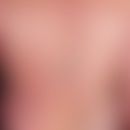HistoryThis section has been translated automatically.
Link, 1809
General definitionThis section has been translated automatically.
- Whitish mould, which is added to camembert and many other cheeses for maturing and flavour development. Under the name "Geotrichum candidum", the fungus is almost unknown, but almost everyone has come across it as a milk mould on curd cheese or on soured milk in the form of a fine fluff.
- Behaviour when cultivated: yeasty growth, initially without air mycelium. Cultures are therefore very often confused with yeast fungi or Candida albicans. The filaments in the agar and the air hyphae formed at room temperature decompose into limb pieces (arthrospores) which are very similar to the shoot cells of yeasts. Fast growing, moist, dull, flat colonies with a whitish, light grey or yellowish surface. Felted surface texture with a central cotton-like eruption and a peripheral ring of radiation. Typical obstinate smell in young cultures; cheesy smell in older cultures.
You might also be interested in
Occurrence/EpidemiologyThis section has been translated automatically.
Worldwide spread. Frequently found as saprophyte in human life, especially in milk and dairy products, on fruit and vegetables. Very rarely pathogenic. Occurs in the digestive tract and the oral cavity mostly without pathological value. In the oral cavity, in the stool its occurrence is to be expected when cheese is eaten.
ClinicThis section has been translated automatically.
S.u. Geotrichose.
MicroscopyThis section has been translated automatically.
- Septate hyphae differentiated by disintegration into rectangular arthroconidia (limb spores) (holoarthric fragmentation).
- Arthroconidia: hyaline, smooth, unicellular, rectangular or cylindrical in shape, very variable in size.
- Not true blastoconidia.
LiteratureThis section has been translated automatically.
- Farina C et al (1999) Fungaemia survey: a 10-year experience in Bergamo, Italy. Mycoses 42: 543-548
- Vasei M, Imanieh MH (1999) Duodenal colonization by Geotrichum candidum in a child with transient low serum levels of IgA and IgM. APMIS 107: 681-684
Disclaimer
Please ask your physician for a reliable diagnosis. This website is only meant as a reference.







